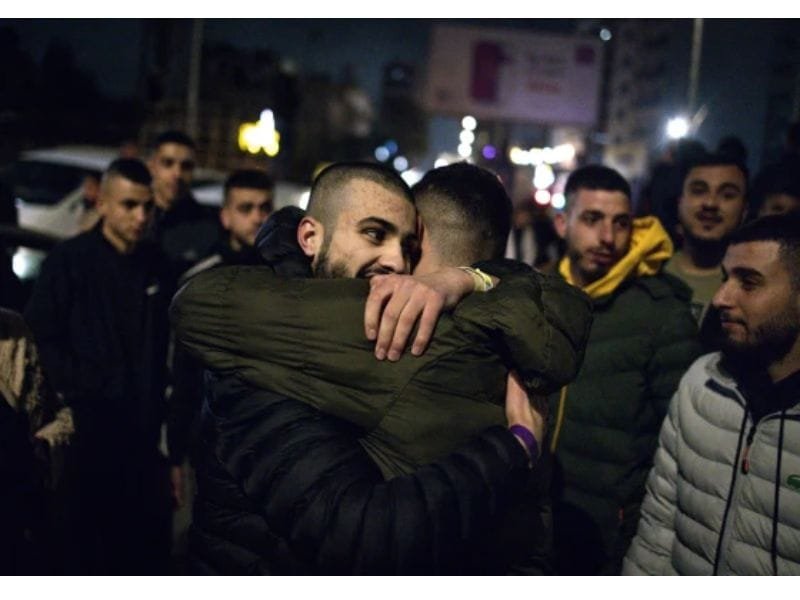- A ceasefire agreement between Hamas and Israel took effect after 15 months of conflict.
- Over 46,000 Palestinians have died in the war, with Gaza’s infrastructure decimated.
- Rafah, in southern Gaza, is 70% destroyed, leaving families to return to ruined homes.
- Despite the destruction, many families vow to rebuild their lives in Gaza.
- The first prisoner exchange under the ceasefire saw 90 Palestinians released.
A ceasefire agreement between Israel and Hamas has been reached after 15 months of intense violence, offering a brief pause to the ongoing conflict. This fragile peace, which started on Sunday morning, provides a moment of hope for the region. Palestinian families, especially in Gaza, face the overwhelming task of rebuilding.
Rafah, a city in southern Gaza, has suffered immense destruction, with over 70% of its buildings and roads destroyed since October 7, 2023. Homes, schools, and vital infrastructure are gone, and hundreds of families have returned to witness the heartbreaking aftermath: their homes reduced to rubble by Israeli airstrikes.
A Heartbreaking Return to Ruins
Abd al-Sattari, a 53-year-old farmer from Rafah, returned home with a slim hope that his two homes had survived the destruction. Sadly, both homes in Shaboura and Mirage were obliterated. “The Rafah we knew is gone,” Abd said, standing amidst the ruins, facing the harsh reality of no home to return to.
Abd wasn’t alone in his loss. Many families returning to Rafah found their homes destroyed as well. “We thought we’d finally leave the tents and return to real homes,” Abd shared, reflecting on his shattered hopes. “Now, it feels like a different kind of destruction—not from bombs, but from a lack of life’s essentials.”
Resilience Amid Destruction: Rafah’s Struggle to Rebuild
The United Nations reports that over 60% of buildings and 65% of Gaza’s roads have been destroyed in the war. About 42 million tons of debris now fill the area, making recovery extremely difficult. Gaza’s residents are struggling without basic services such as water, sanitation, and electricity.
Local officials in Rafah have advised against returning too soon due to the lack of functioning infrastructure. Amjad Abdullah, a resident who stayed in nearby Khan Younis, described life in Rafah as impossible. His home and neighborhood became completely inaccessible after the destruction caused by the conflict.
Despite the widespread damage, many residents remain determined to rebuild. Families like Nasim Abu Alwan’s are returning to live in the rubble, hoping to escape the harsh conditions in displacement camps. “We’ll haul water from afar if we must,” Nasim said. “We’re done with tents.”
Rafah’s mayor, Mohammed al-Sufi, called the damage “staggering.” He also mentioned that large parts of the city near the Egypt border are off-limits due to unexploded ordnance and security risks. Experts warn that Gaza’s recovery will take years, possibly even decades.
A Glimmer of Hope: Prisoner Exchange Brings Relief Amid Crisis
As part of the ceasefire agreement, a significant prisoner exchange took place on Monday. Ninety Palestinians were released from Israeli prisons and arrived in the West Bank, where jubilant crowds greeted them. The exchange also included the release of three Israeli hostages, offering a moment of relief for many.
Among the freed Palestinians were 69 women and 21 children, some as young as 12. One of the prominent figures released was Khalida Jarrar, a well-known Palestinian political leader. She had been held in solitary confinement under Israel’s “administrative detention” policy, which allows for indefinite detention without trial.
The exchange was a deeply emotional moment for many families. Thousands gathered in Ramallah to celebrate the return of loved ones who had been detained for months or even years. While the ceasefire offers a temporary pause, Gaza’s long road to recovery remains uncertain, with many facing the challenge of rebuilding their lives.


